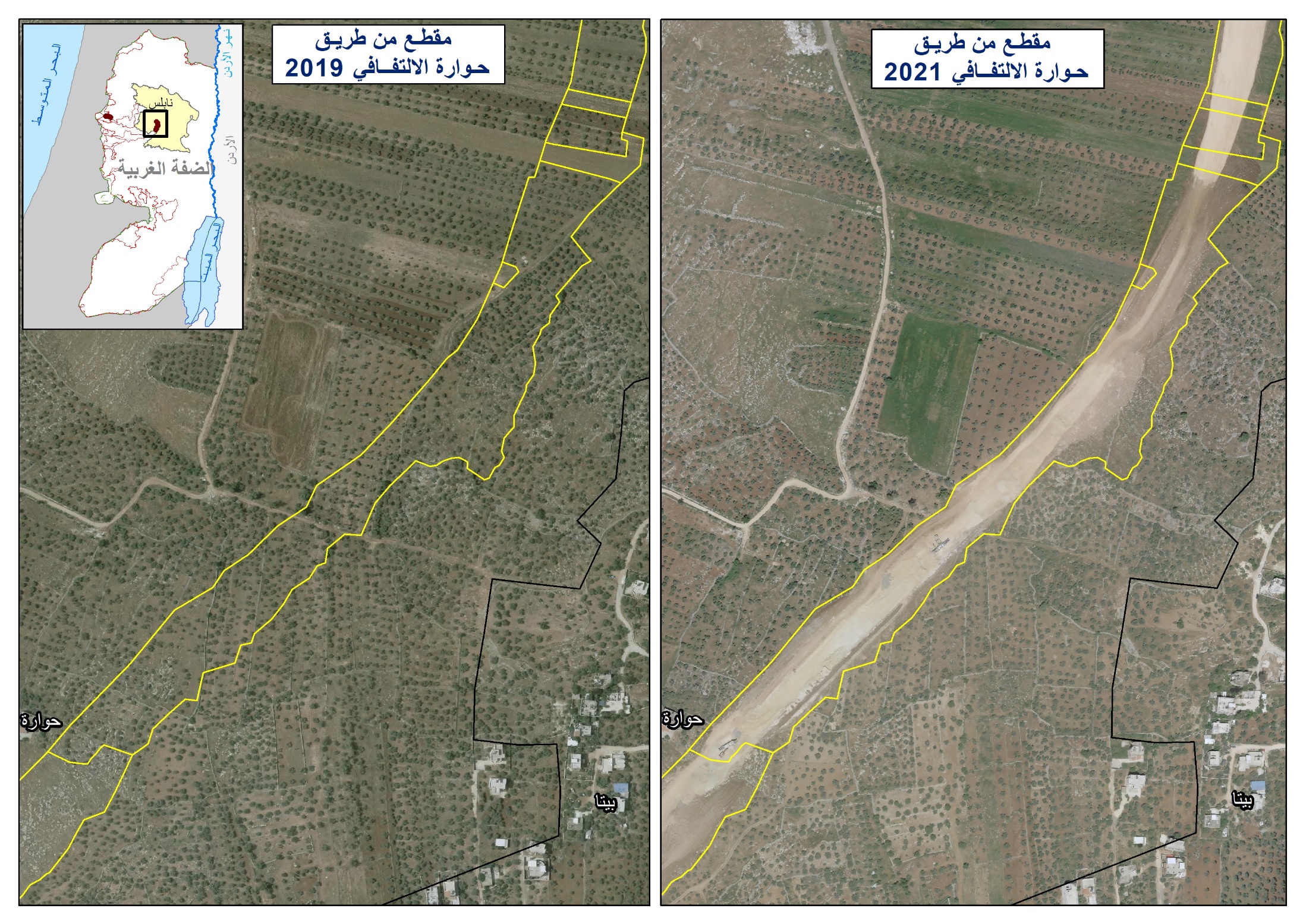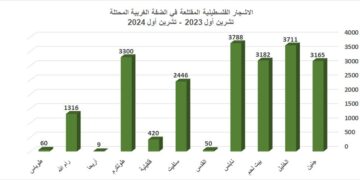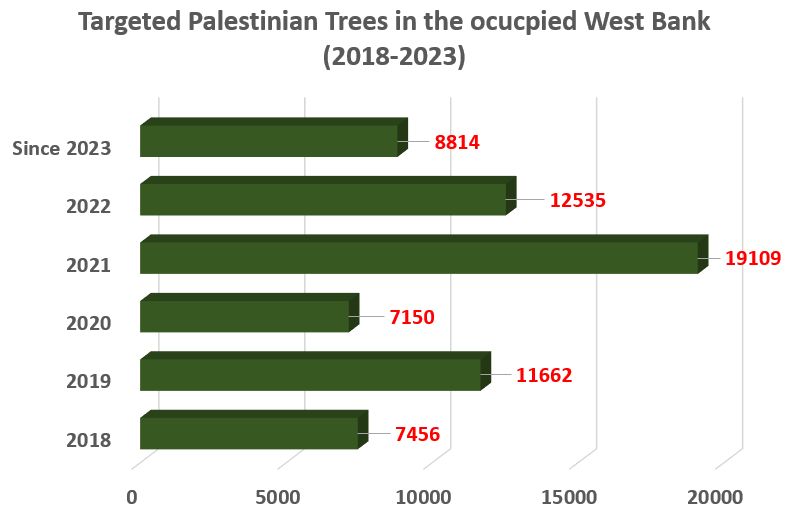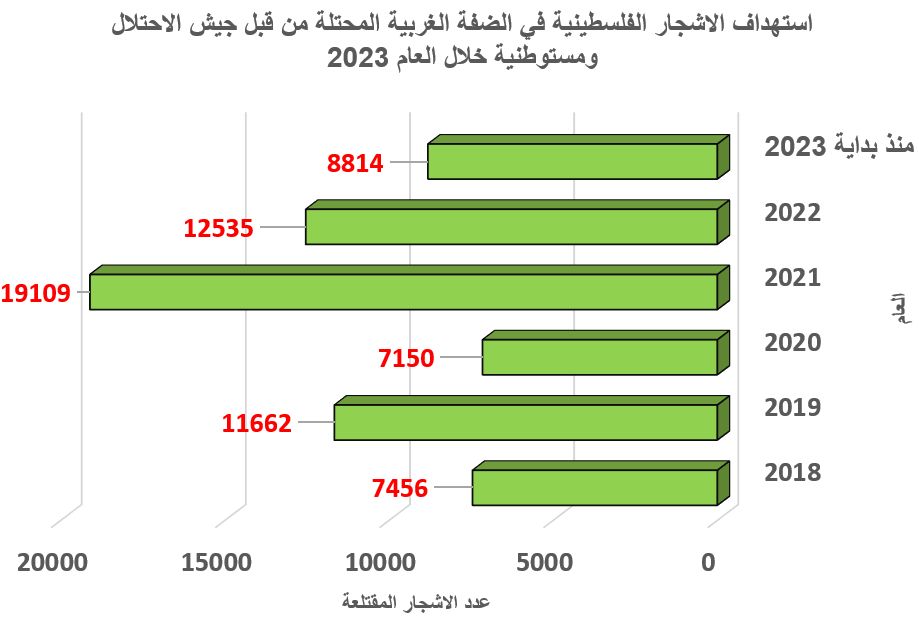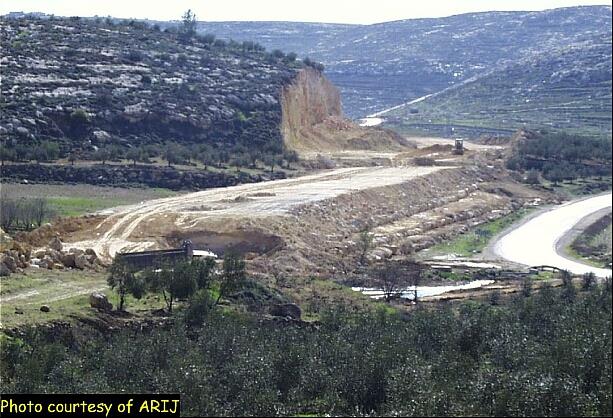Introduction:
Since the inception of Intifadat Al Aqsa on the 29th of September 2000, the agriculture sector in the Gaza Strip has suffered a great number of attacks and reprisals by the Israeli Army and the Jewish settlers. These attacks took the form of bulldozing hundreds of dunums, the demolition of houses, in addition to the destruction of greenhouses, uprooting of trees, vegetables, watering systems and wells. Furthermore, a large number of dunums were sealed off and declared as Closed Military Areas while others were confiscated to be used for settlement expansions, the creation of by-pass roads and buffer zones.
As stated earlier, the Israeli aggression took a number of forms. The Land Research Center (LRC) had documented these attacks and divided them into the following categories:
A: Land Bulldozing:
Israeli occupation forces have used this method as a collective punishment tool for the Palestinians after the occurrence of confrontations between the two sides. Yet, during Intifadat Al Aqsa this tool has taken an added occupational, colonizing and security dimensions as land bulldozing was used to create an irreversible new situation on the ground created to arrive at pre-set specific goals. This is a summary of the results of this policy in Gaza:
-
The complete closure and isolation of the cities and villages of the Strip as Israeli forces bulldozed the alternative roads used by the Palestinians to by-pass the military checkpoints.
-
The creation of a 500-meter geographical strip along the Palestinian-Egyptian borders. The bulldozed land used to be one of the most fertile lands in the Gaza Strip. Not any longer.
-
The demolishing of houses, greenhouses and farms in addition to the uprooting of trees located on both sides of the main roads used by the Israeli army and settlers. The bulldozing reached as far as 200 meters on both sides of these roads.
-
The creation of a great number of bulldozed lands that can be used in the future to open up by-pass roads connecting between the illegal Jewish settlements located in Gaza Strip.
-
The annexation of a great number of dunums to be used to expand Jewish settlements. Such dunums were targeted in the past but the Israeli authorities could not annex it under the ''peace process.'' Such authorities took advantage of the volatile security conditions to annex the previously targeted lands.
-
The great economic devastation on the personal and national levels caused by such practices led the Palestinians to be placed under the mercy of the Israeli market as the only other source of income. Such a condition places a great deal of pressure on the Palestinian people to stop the Intifada in addition to the pressure placed upon the Palestinian leadership to surrender to the Israeli stipulations.
-
The bulldozing of agricultural lands led to Palestinian loss in the local market and made them need the Israeli products for their day-to-day living. This, in turn, led to the infiltration of Israeli products into the Palestinian areas and the transformation of the Palestinian society into a consuming, rather than a producing, society. Sequentially, all the aid received by the Palestinians is channeled into Israel through buying Israeli products which makes the Intifada a profitable Israeli enterprise.
Thus, we conclude that the Israeli attacks on agricultural enterprises in Gaza did not come as a reaction to the Intifada as proclaimed by Israel. It was a programmed endeavor with clear political, military and economic objectives aimed at subjugating the Palestinians to Israeli provisos.
Land Bulldozing in Numbers:
-
During the month of November 2000 Israeli Army bulldozed more than 2,217.5 dunums in Gaza according to the following distribution:
Gaza District (199 dunums), the Middle District (364.5 dunums), Khan
Younis District (841 dunums), and Rafah District (813 dunums).
-
The bulldozed lands contained different types of trees. Their distribution is as follows:
1. Olive trees constituted 41% of the uprooted trees and lands,
2. Orange and apple trees constituted 21%,
3. Watered vegetables constituted about 10%,
4. Palm trees constituted about 7%,
5. Almond plants constituted 6%,
6. Guava plants constituted 5%, in addition to
7. About 10% of the lands planted with fig, grapes and wild shrubberies.
-
It is estimated that the number of uprooted trees reached 63,000 trees in the Gaza Strip.
-
About 43 dunums containing greenhouses were also bulldozed which caused a double jeopardy; a loss of plants and the loss of the greenhouses and their watering systems and networks.
B: Settlement Expansion:
Taking advantage of the volatile security condition, Israeli forces actively helped the Israeli settlers in their efforts to expand their settlements at the expense of Palestinian lands. This policy led to the expansion of five Israeli settlements on the expense of 373 dunums of Palestinian lands some of which belonged to the Palestinian Authority while the rest were Palestinian private property. The following table puts these numbers into prospective:
|
Location |
The Settlement |
Area Confiscated in dunums |
Notes |
|
South of Beit Lahia |
Dogheit |
250 |
Public lands |
|
North eastern Beit Lahia |
Elie Sinai |
20 |
Private property owned by Mr. Salah Khader. Land planted with olive and orange tree |
|
Qateef crossroad |
Morag |
1 |
Private properties owned by the Abu Jazar and Thuhair families. Land planted with vegetables. |
|
Sea shore of Khan Yunis |
Kfar Yam |
2 |
12 tourist cabins owned by the Khan Yunis municipality. |
|
To the south of Kfar Darom |
Kfar Darom |
100 |
Settlers surrounded the land with barbed wires and placed 4 caravans on it in preparation to annex it to the settlement. |
Prepared by
The Land Research Center
LRC



